"Multi Blue" - very popular and loved by many dackets grade Clematis. These compact bush lianas, which give all summer blue-purple flowers, can be placed near the gazebo, an open veranda, lattice or mesh fence, transform the facade of the country house. Such a liana is able to "climb" on shrubs, low conifers. How to cause rapid growth and abundant flowering of charming Clematis - we will talk about it in the proposed article.
General information about Clematis
These rejoices of perennial lianas are considered to be queens among all curly plant plants. They grow on all continents and are found to the ilok family. Other plants names - Lomonos, Lozinka. Botany counted 230 species in nature, and 15 of them grow well in Russia. Flexible shoots can go to three meters long. For the support, they learned to cling to the cuts of their leaves. And the leaves are placed on the stems oppositely, they are solid, or troops, or with a peristry dissection. Depending on the color of the color of flowers, the purple, blue, blue, pink, raspberry, white, yellow, red. There are varieties with small flowers (their diameter ranging from 2 to 5 centimeters), but the varieties from the large-flowered group are surprised by flowers, the size of which is from 15 and even up to 20 centimeters. At first, after landing, these Liana direct their strength to the growth and development of the root system. At the base of the planted seedling, the kidney renewed is formed.
In one place, Clematis Lians are successfully growing for 15-20 years.
Currently, various varieties of Clematis are brought to Russia. It is worth noting that the varieties included in the Montana group are not suitable for regions with cold winters, because the flowers are formed on the shoots of the previous season. But there are lianas, the above-ground part of which can adapt to the conditions of Russian winters. Such lianas each season grow and increase the size of the bush from the kidneys, which in the spring "awaken" on the overwhelming shoots. Many species Lomonos, as well as those belonging to the "Jacmana" group, "Vitellael", "Patzen", in the middle lane. In the conditions of the middle strip, for example, Clematis varieties are successfully growing: "Multi-Blue", "The President", "Joan Picton", "Mini "," Nadezhda "," Space Melody "," Cuba "," Luther Bolbank "," Elegy "," Silver River ".
Description Clematis "Multi Blue"
This is a representative of the Patence Group and is particularly popular with gardeners. Here is his main advantages:
- compact;
- attractive "
- unpretentious.
"Multi Blue" (Other Writing - "Multi Blue") develops as a leafy liana, which gradually decide the stems. In the length of her whip they grow up to about two meters for about two meters. Young shoots are subtle and flexible, brownish. Gradually, they become dense, but the flexibility does not lose and fasten well on the support. The root system is fleshy, with many small roots, located close to the surface of the soil. Therefore, the Clematis Multi-Blue grade is trying not to loosen, or spend this procedure very carefully. But the mulching for the roots is very useful. Leafs on shoots are beginning to unfold early, with the arrival of heat. They are oblong, with a sharp tip, can reach lengths up to 10 centimeters. First, the petioles of dark-green leaves are thin, but gradually become durable and woody. Such stiffers help the shoots to be mounted on the support and climb up. Almost throughout the summer period, buds appear on Liane. Gradually, they turn into lush terry flowers consisting of four-eight petals. Their form is correct, oblong, the tip is pointed. There are several forms at the variety, most often the color of flowers in blue-violet tones. There are forms with blue painting petals and a bluish tide. Much less often forms with petals of pink color and white crossing. There are accommodations on the petals, and on the bottom you can feel easy omission. When the flower is completely revealed, it can be compared with the bowl, the diameter of which is from 14 to 18 centimeters. The terry middle is represented by a multitude of stamens, their color is saturated pink or intense red.
Ideas for the placement of Clematis
- These curly plants can be planted along the wall of the country house, along the grid or grille.
- They are suitable for the design of "alive" hedge.
- Apply to zoning space and decorating a recreation area next to a gazebo or veranda.
- Speecually looks liana, planted in the center of the bench.
- Successful flowerbeds are obtained if around Clematis around the circle place a calendula, velvets, nasturtiums, alissa, phlox, chamomile, white petunia, annual chrysanthemums.
- Not far from Clematis can be located gorgeous roses, bright peonies, begonias, as well as Tui, juniper, silvery ate, honeysuckle.
- Arches are expressively looking at which shoots with large colors of Clematis are put.
- Compact Clematis are grown in bulk containers on loggias.
Take the landing of Clematis "Multi Blue"
The best time for landing is an early spring (until mid-May) or September. Those seedlings for which the root system is closed (in a pot or container) can be planted in summer. It is advisable to buy a two-year Clematis saplings that have a root system already developed well, that is, there are from four to six large roots, the length of which is from 10 to 15 centimeters. The cuttings cut off or the seedloves are separated from an adult bush, and then hesitate. And only then send for sale in a nursery or garden center. Preferences give to the seedlings that were grown in the terrain that is similar to your climatic conditions. Immediately you will not know that those seedlings are alphabets, which bring to our country from Holland or Poland, are going on much worse, and and bloom later in terms of timing. When you choose Clematis Sapers with an open root system, then take yourself the one that has a lot of sleeping kidneys. Also, see the roots to be moistened, without thickens and signs.
If you purchased Clematis "Multi-Blue" in the container, then before installing the root system (directly in the container) you need to hold 15 minutes in water. After such moisturizing, carefully remove the earthen car from the water.
Place Clematis Choose on the site is where a lot of sun. Permissible and light half. And here you should not constantly "manage" strong wind streams, otherwise they break off shoots. Closely with an iron solid fence, seedlings do not place, otherwise they will feel like "in the oven" and they will warm. From such fences, retreat near the meter.
It is impossible to plant Clematis where water is stared, otherwise they may die.
Another significant moment. Best of all Clematis grows on soils, where the medium reaction is weakly alkaline.
The pit digs the spacious, its size is at least 60x60x60 centimeters (this is width, length and height). It is important to put drainage to the bottom, gravel, clamzit, pebbles, small pebbles. Next, send a large bucket of the compost land to the pit, mixed with Dolomite flour (about 400 grams). Then make a hill from the mixture of your garden land and compost. Then put your seedling into the pit on the pit. Root neck Let be blunting at about eight centimeters (this is one or two nodes). At first, the kidneys are sprinkled with river sand, and then the soil mixture so that water is not delayed at the base of the bush. Over time, from those kidneys that were bueled, the so-called center of adversaries is formed, in the future you will have a strong bush with a lot of abundant shoots that will not suffer from frosts or from hot rays of the Sun.
After you have tamped the soil mixture near the seedling, the landing site. If you have several multi-power saplings, then the distance between them should be about one and a half meters so that they do not interfere with each other year from year to year successfully develop.
Recommendations for the care of Clematis "Multi Blue"
For rapid growth, Clematis needs a support. It can be a tweer, arcs, fences (lattice or mesh) and even the trunks of old trees. Part of the branches can be sent by twine. For this plant is ventured regular watering (at least once a week). If the summer is sultry, without rains, then the soil moisturize two or three times a week.
Reduce the evaporation of moisture from the soil layer helps mulching with pieces of bark or compost. All weed herbs under Clematis are in a timely manner.
According to the European method, regulating the cultivation of Clematis, the roots of this plant do not endure the sun. Therefore, flowerflowers in Europe from the south side of Lomonos build a "lawn" (near the bush). But our soils and flowers who are fans of these Lian, in their own experiences found out that those plants that are very close to Clematis's roots, take a lot of nutrients from the soil, which affects the power of the growth of Lomonos shoots. They believe that it is best that this plant develops precisely when a lot of sunlight falls on it. And not heat afraid of Liana, but a lack of moisture in the ground. Economic Europeans watered their flower beds and gardens are much smaller than our gardeners. Therefore, if you have the opportunity to abundantly water Clematis, then the grassy gesture in the immediate vicinity of the root system of Liana can not be done.
Our Clematis lovers assume that the best fertilizer for these plants is an alkaline, in which there is a lot of nitrogen. Such a fertilizer can be made in a small barrel with water, pouring there weed herbs so that they "wandered" there. Send a little manure to the barrel. And after one or two weeks the infusion will "cause" (the so-called scene will appear). Here is this breeding fertilizer and need to water the Clematis bushes. To speed up the "maturation" of such a green fertilizer, the dackets are added to the barrel of the "Baikal-Em" type. You do not want to do such a fertilizer yourself, then you can watch ready-made liquid fertilizers made on the basis of ammonia. Choose in the flower stores those in which the label contains molybdenum, cobalt, boron and other trace elements. It is still more often at the Clematis Ala. Or sometimes water water into which the dolomite flour was added. For the season under Clematis fertilizer make three times. And you need to start feeding from the second year after the time of Lomonos landing. Fresh manure under Liana do not sit down, otherwise various fungal diseases can develop.
If the in the summer is very often raining, then the risk of fading shoots. It is possible to avoid such trouble if after the shower can be powdered by the ash powder of the lower part of the liavenoid shoots. It happens that summer houses complain that in June, Klematis's bush fade. This may happen due to the fault of the soil mushroom. Spring and late spraying of lianas with copper vitrios help to avoid this attack. Prevent the development of malical dews is possible using the preparations "topaz" or powder the sulfur powder of colloidal.
If you want your bush of Clematis expanding, then in the spring it is a little spread over the overwhelming shoots on the parties, after which they hurt their bush, partially sprinkled and shooting, to a height of 20 centimeters. Part of the stems that were underground will soon be roaming, as a result of which the bustice will expand.
Methods that make a propaganda like Clematis:
- In the spring, you can carefully disperse the base of the rapid bush and separate several shoots from it together with the roots.
- Resort to stalling. In June, cut sections of two nodes are cut. One node will need to be placed in a wet layer of the soil, and the other is to pour out the earth. Top plates the cap - cut plastic bottle.
What is important to know about trimming Clematis "Multi Blue"? In early June, the boutons are formed on the shoots remaining since last year after wintering, and already the flowers appear on the thrown of young shoots. In this regard, you should not shock the shoulders during flowering. Yes, and in the spring and autumn time, the trimming must be done deliberately and neatly. In the fall, pruning is most often carried out at the level of 100-130 centimeters from the ground. When autumn is about to give way to the "throne" of winter, in one of the dry days it is necessary to hold the escapes. Under the bush sweep the humid (or compost) to form a rise on 25 centimeters. Then the boots are placed on this elevation. Carefully remove previously cropped shoots from the support, roll them up by the type of "horse tail" in the form of a ring, secure the wire and put it on the lapper. Next, it should be put back. Cover the "honeycomb" no bowl ". And the last layer is a plastic film, the bottom of its edge will fasten with bricks. If the mice (or their congratulations sometimes can sometimes operate on the site, do not forget to close the bait (the storm tablets will rise). Then the shoots and roots of your favorite Clematis will remain unharmed.
Usually "Multi Blue" calmly transfers frosts. But he may suffer from wringing. In the spring, do not tighten with the shelter removal procedure. Moreover, the "undressing" spend stages. At first (in the first decade of April), remove the polyethylene and "no bow." A few days later, remove a bit of the facothy. Next, focus on the weather. Usually at the end of April, the rest of the shelter elements are also removed, and the shoots are fixed on supports. If in the spring you found that about the bush is very humid, and there are signs of rotting, then save the plant with the help of a fungicidal agent, then transfer it to another garden place.
Favorable environment and proper care is the key to the fact that your Clematis will grow all summer shooting and opening large blue or blue-violet flowers. Their painting depends on the soil, nutrients in it and the degree of luminance of lianas by the solar rays.

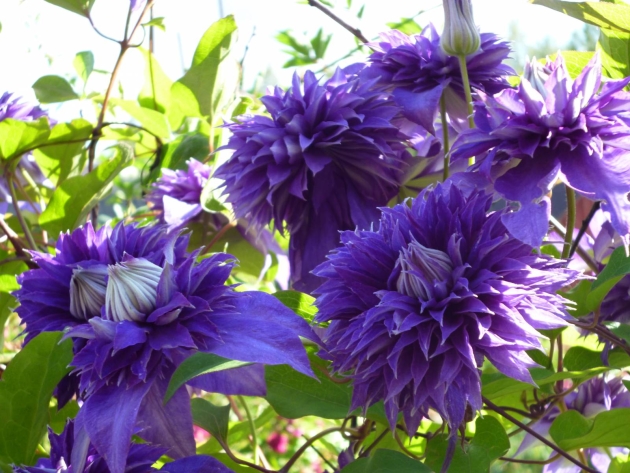
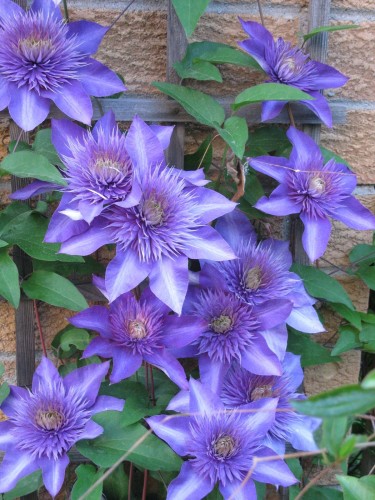
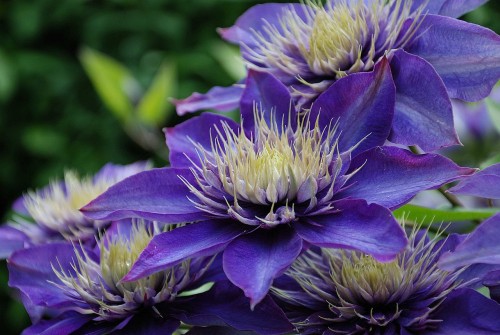
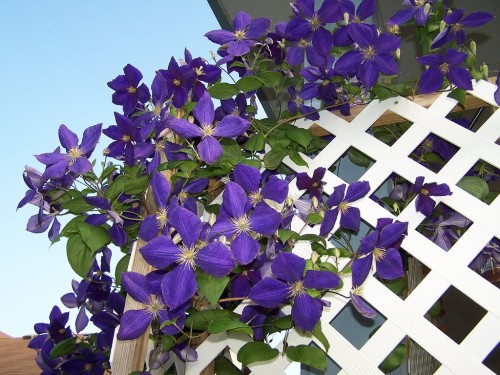
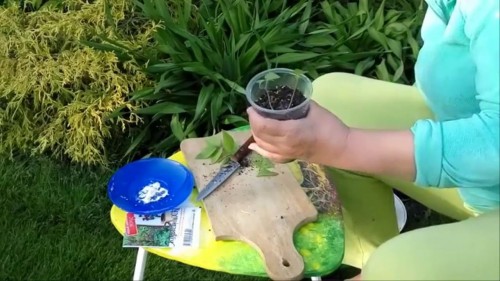
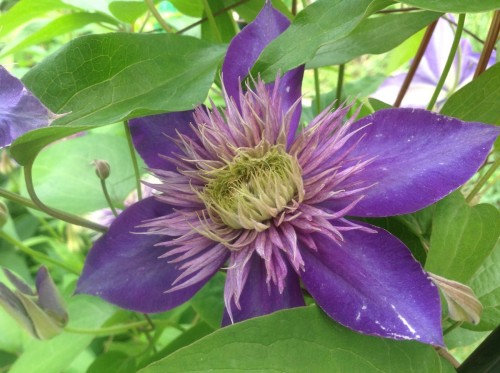
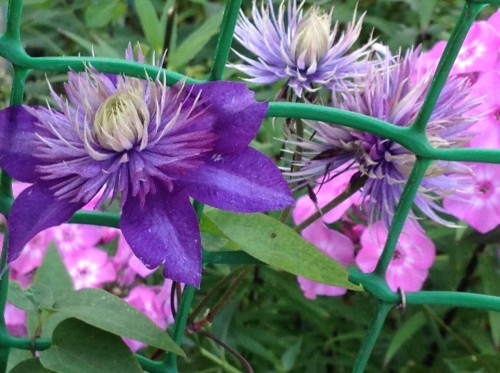
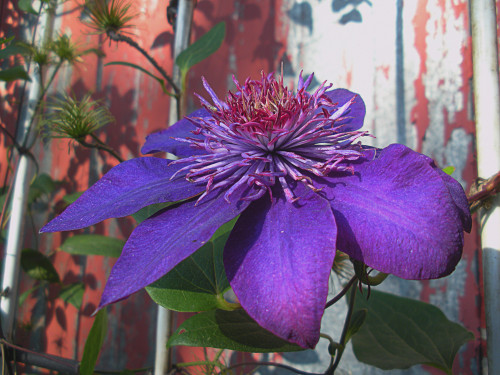
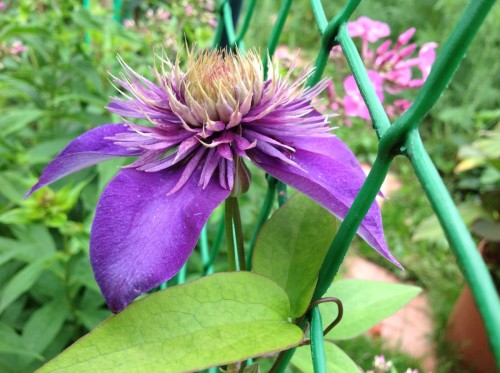
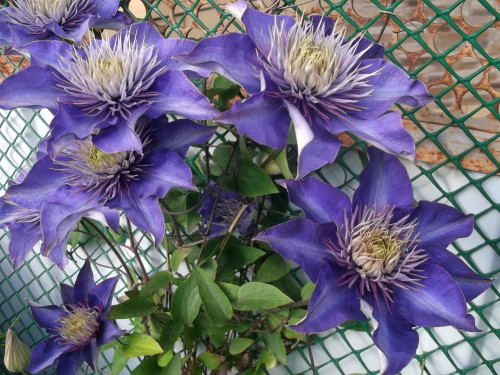












 Start a discussion ...
Start a discussion ...